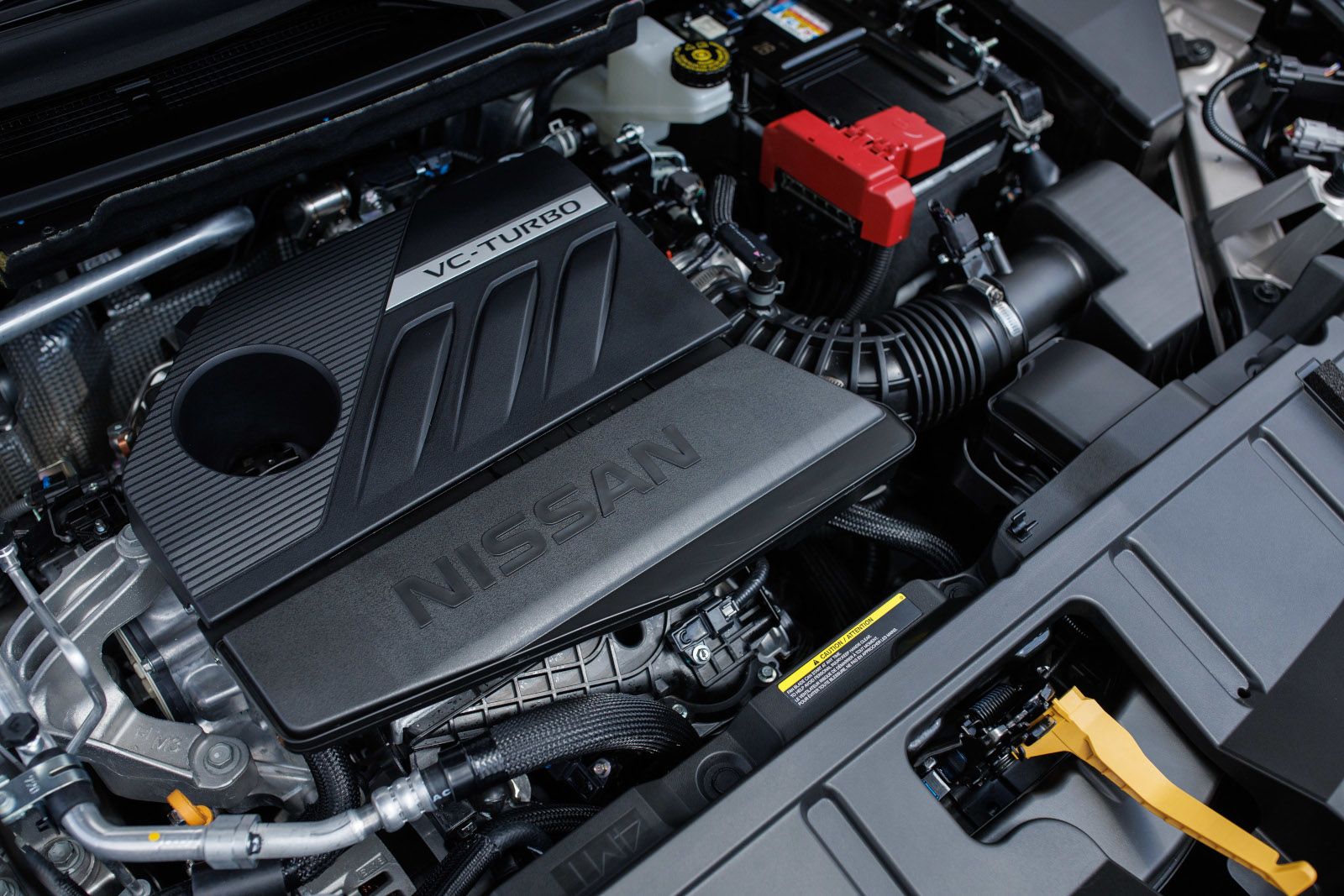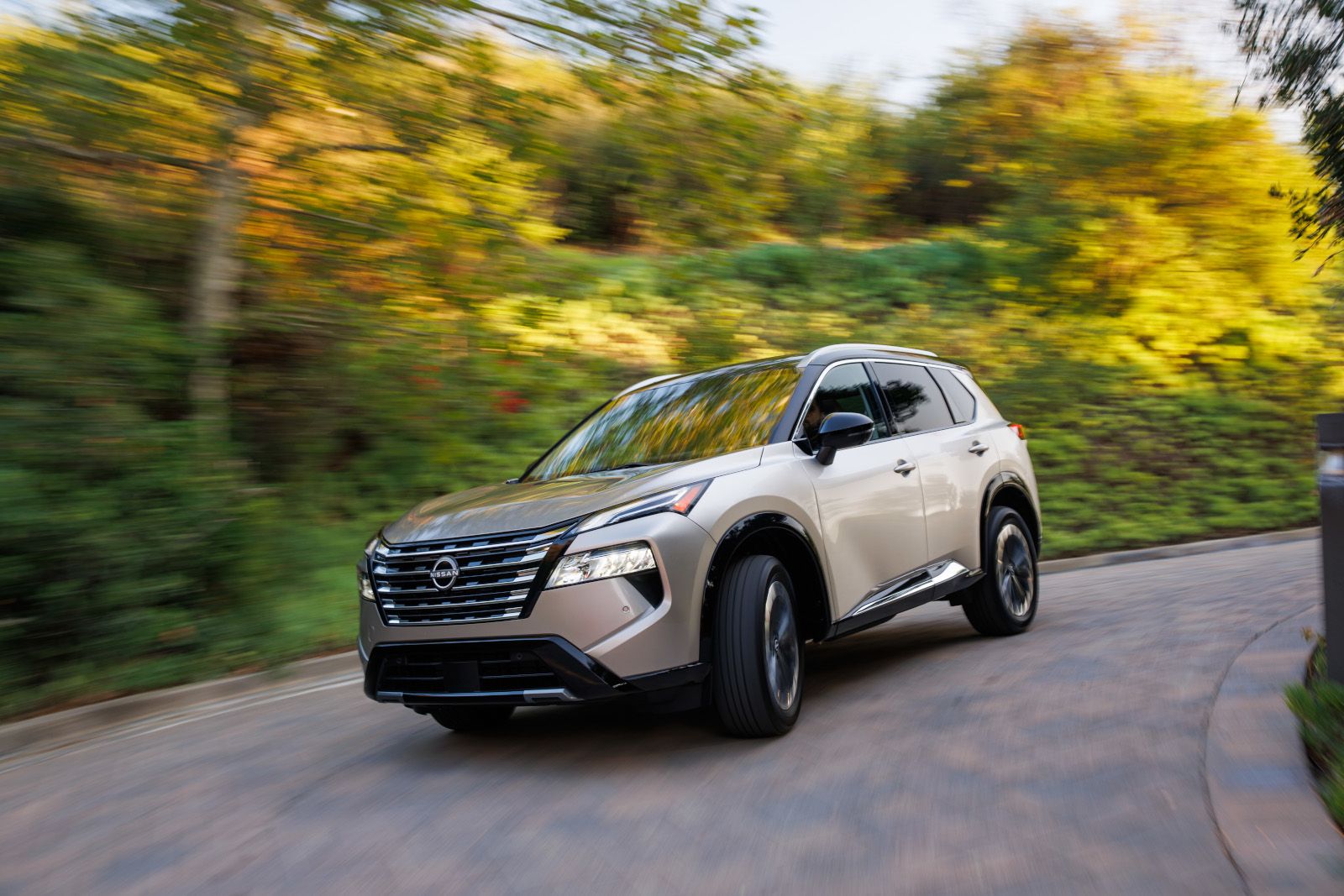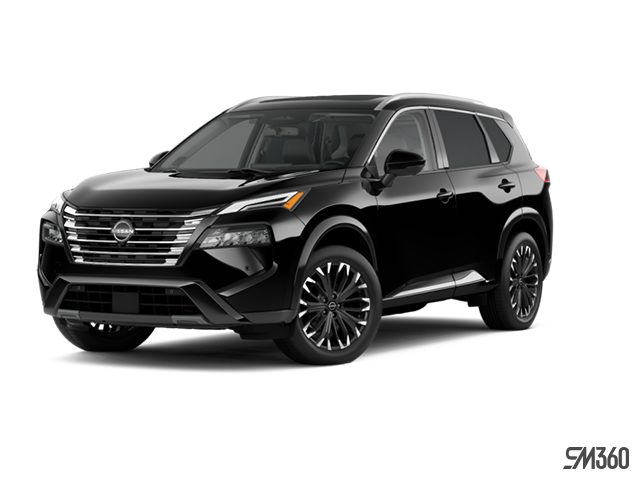The 2026 Nissan Rogue uses a 1.5-litre Variable Compression Turbo engine that adjusts its internal compression ratio in real time based on driving conditions. This technology allows the turbocharged 3-cylinder engine to optimize either power delivery or fuel efficiency depending on what the driver needs at any given moment.
Rated at 201 horsepower and 225 lb-ft of torque, the VC-Turbo engine provides responsive acceleration for highway merging and passing while maintaining efficiency during daily commuting throughout Orangeville and the surrounding region.
Understanding Variable Compression Technology
Most engines operate at a fixed compression ratio. The Rogue's VC-Turbo engine changes its compression ratio continuously between 8.0:1 and 14.0:1, depending on power demand. Higher compression ratios improve fuel efficiency during light-load conditions like steady highway cruising. Lower compression ratios accommodate the turbocharger during acceleration and prevent engine knock when maximum power is needed.
The system uses a multi-link mechanism that physically adjusts the piston stroke length to change the compression ratio. This mechanical adjustment happens seamlessly while driving, requiring no input from the driver. The engine control unit monitors throttle position, vehicle speed, and load conditions to determine the optimal compression ratio for each moment.
How the 3-Cylinder Configuration Affects Driving
A turbocharged 3-cylinder engine produces less internal friction than a 4-cylinder or 6-cylinder engine, contributing to improved fuel efficiency. The turbocharger compensates for the reduced cylinder count by forcing more air into the combustion chamber, maintaining power output comparable to larger engines.
The 1.5 L displacement provides adequate torque for Ontario highway driving. The 225 lb-ft of torque arrives at moderate engine speeds, giving the Rogue responsive acceleration when entering Highway 10 or Highway 9 from local roads.
Powertrain Components and Drive Modes

The VC-Turbo engine pairs with an Xtronic continuously variable transmission (CVT). This transmission type maintains optimal engine speed for fuel efficiency and provides smooth acceleration without the shift points found in traditional automatic transmissions.
Standard Idle Stop/Start shuts off the engine when the vehicle comes to a complete stop, such as at traffic lights or in drive-through lanes. The engine restarts automatically when the driver releases the brake pedal. This feature reduces fuel consumption during city driving and extended idling situations.
All Rogue models can be equipped with Intelligent All-Wheel Drive, which monitors wheel slip and road conditions to distribute torque between the front and rear axles as needed. The system operates automatically and works alongside the VC-Turbo engine to maintain traction on snow-covered or wet roads common in Ontario during winter months.
Real-World Applications for Ontario Drivers
The variable compression system adapts to different driving scenarios without requiring manual adjustments:
- Highway cruising: The engine operates at higher compression ratios to maximize fuel efficiency during steady-speed driving between Orangeville and Toronto.
- Acceleration: Lower compression ratios allow the turbocharger to deliver maximum boost for passing slower traffic or merging onto highways.
- City driving: The system balances compression ratios to accommodate frequent speed changes while Idle Stop/Start reduces fuel consumption at intersections.
- Rural routes: The engine adjusts continuously as road conditions vary between hills, curves, and straight sections common on Dufferin County roads.
Engine Specifications Summary
- Displacement: 1.5 L turbocharged 3-cylinder
- Power Output: 201 horsepower
- Torque: 225 lb-ft
- Compression Ratio Range: 8.0:1 to 14.0:1 (variable)
- Transmission: Xtronic CVT
- Drive Configuration: Front-wheel drive or Intelligent All-Wheel Drive
- Fuel-Saving Features: Idle Stop/Start, variable compression ratio
Comparing Power Delivery to Traditional Engines
Traditional engines maintain a fixed compression ratio optimized for either power or efficiency but not both. The VC-Turbo engine's ability to adjust compression ratios allows it to deliver strong acceleration when needed while operating efficiently during light-load conditions.
During highway passing maneuvers, the engine reduces its compression ratio and increases turbo boost to provide the power needed for quick acceleration. Once the pass is complete and cruising speed resumes, the compression ratio increases to reduce fuel consumption. These adjustments occur automatically based on throttle input and engine load.
Test Drive the 2026 Rogue at Orangeville Nissan
The 1.5 L VC-Turbo engine's variable compression technology represents a practical approach to balancing performance and efficiency for Ontario driving conditions. Visit our team at Orangeville Nissan to experience how the VC-Turbo engine responds to different driving situations on local roads and highways.






